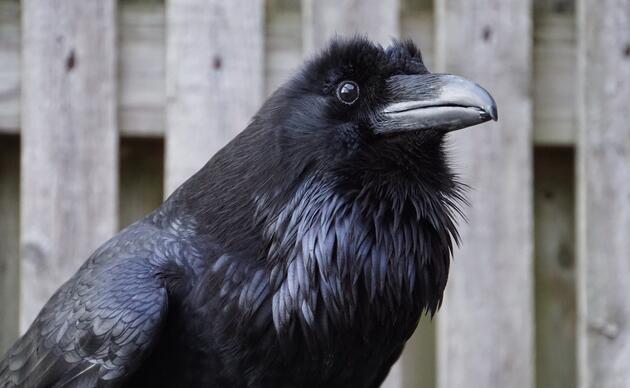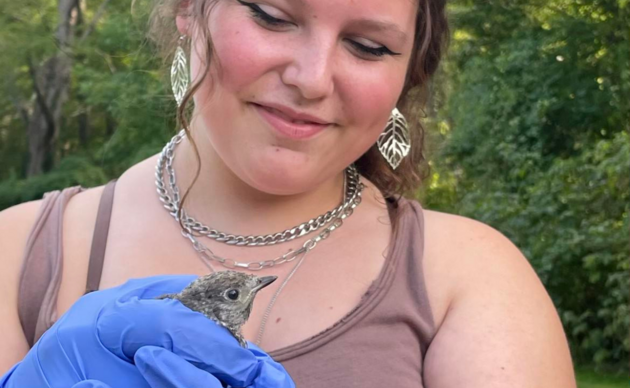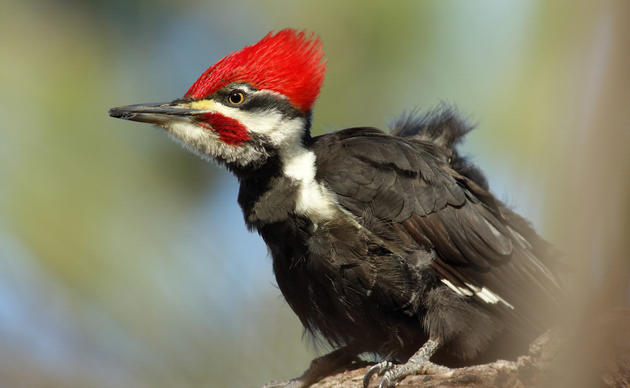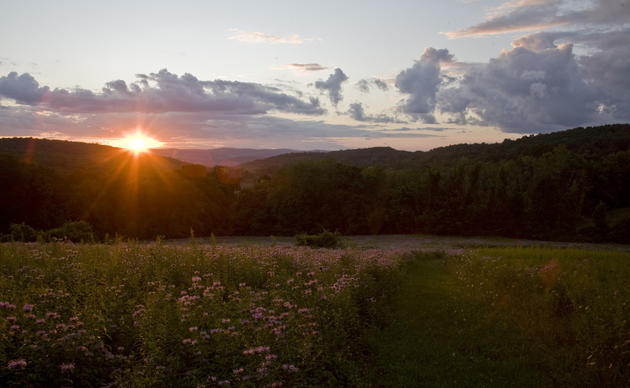Brought to Sharon Audubon Center: September 5, 2006
Sex: Male
Injury: Imprinted on humans
History: Manitou was found in Merideth, New Hampshire when he was very young. Although uncertain about how he was originally aquired, he was raised by people and became imprinted. The person who found him brought him to Squam Lakes Natural Science Center in Holderness, New Hampshire where he lived for 2 years as an education bird. Manitou is one of the more animated resident birds at the Sharon Audubon Center, readily flying over the front of the cage to greet people as they go by. He is very vocal, mimicking many human sounds. He is currently in training to be intergrated into the live animal programs that the Center provides. The name Manitou comes from the Algonquian word meaning spirit.
Raven (Corvux corax)
Did You Know? Ravens are considered among the most intelligent of all birds. Like crows, they can learn to imitate a variety of sounds, including the human voice.
Weight: 24 - 30 ounces
Height: 20 - 25 inches
Wingspan: 40 - 48 inches
Life Span: 15 years in the wild
Description: The Raven is the largest member of the Crow Family. Its coloration is pure black with a purple or violet sheen that can be seen under certain light. The tail is wedge-shaped during flight, which distinguishes it from crows.
Call: In nature, their calls include guttural croaks, gurgling noises, and a sharp, metallic "tock.
Habitat: Found in a variety of habitats, from treeless tundra to coastal sea banks, rocky cliffs, forests, desert canyons, and open plains.
Range: Resident in North America from Alaska and Canada south through the Western United States to Baja California and Nicaragua. Found along the Eastern United States from Canada to Northern Georgia.
Diet: Ravens are scavengers and will eat just about anything that is dead, but they will also hunt for mice, lizards, small birds, snakes, insects, and berries.
How you can help, right now
Learn & Explore
Where birds thrive, people prosper. Help us transform local communities into places where birds flourish. Learn what you can do to nurture wildlife, nature, and conservation in Connecticut.
Support Our Work
Through land stewardship, science, education, and advocacy, we work to preserve habitat and protect bird species that are of state, national, and global concern. Your gift makes a difference.
Join Our Family
When you become a member of Sharon Audubon Center, you are protecting critical woodlands and a natural heritage for generations to come. Help us do great things.





